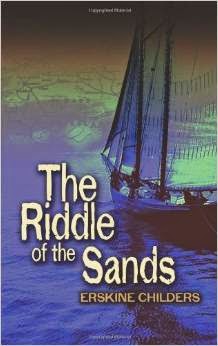The Camino Voyage – An Epic 2,500 km Modern Day Celtic Odyssey
The Camino Voyage, a full length feature film by Dónal Ó
Céilleachair (pronounced O’Kelleher) of Dónal Ó Céilleachair, left us wishing it
wouldn’t end. We saw it in a special
screening as part of the Celtic Camino Festival in Westport, County Mayo. The theatre was packed with Celtic Camino Society members from many
countries, including visitors from as far away as Vancouver, Canada, the US, Holland,
Spain, UK and all over Ireland.
The movie is about a crew – including a writer, two musicians, an artist and a stonemason – who embark on a Camino expedition not by land but by sea in a traditional boat they built themselves. Their naomhóg, a wood-framed canvas covered boat, carried them 2,500 miles in three six-week long stages over three summers across the Irish Sea and the English Channel, along the coasts of France and Northern Spain and canals inland to Santiago de Compostella. They rowed and sailed the entire way, until they reached the last stage. They transported the naomhóg by car to Santiago, then carried her to the entrance of the Cathedral. It was an epic and inspiring journey, often dangerous and always grueling.
The Camino (the Way) is the name of any of
the pilgrimage routes to the shrine of the apostle St.
James (Santiago in Spanish) in the Cathedral of Santiago de
Compostela in Galicia in Northern Spain. The route they took
was once called the Camino Inglés, one of the sea routes. It
traditionally started in A Coruña or Ferrol to which pilgrims arrived by boat
from Great Britain and Ireland. But the north coast of Spain was deemed too dangerous
for the small vessel. They were not out to prove their machismo. They had an
idea of a voyage and wanted to see if they could do it. Very simple. So they
opted to take an inland route once they reached Spain via canals and rivers as
far as they could get. Camping in coastal towns and villages en route, this
eclectic crew forged many new friendships and surprised those they met
with a boat that seemed to come straight out of the middle ages.
 They were tested to their limits but still found humour in
their situations. It was a voyage of self-discovery, of rediscovery of nature,
and inspiration to all. They all attested to it being life altering. Yet, it
was great craic and naturally the Irish charmed villagers along the way, played
music in pubs and endeared themselves to all they met.
They were tested to their limits but still found humour in
their situations. It was a voyage of self-discovery, of rediscovery of nature,
and inspiration to all. They all attested to it being life altering. Yet, it
was great craic and naturally the Irish charmed villagers along the way, played
music in pubs and endeared themselves to all they met.
Featuring Brendan Begley, Liam Holden, Brendan Moriarty and
celebrated poet Danny Sheehy (Dómhnall Mac a tSíthigh), who conceived the idea,
the movie opens with Danny convincing the lads to join him on this journey. Much
of the movie is in Irish with subtitles but that does not detract, instead it
somehow punctuates the allure of the concept. They rope adventurer Paddy Barry
to come along on his sailboat as support vessel.
In 2014, they set out from St. James Gate on the Liffey on
the first leg of their three-year Camino Na Sáile in Naomh Gobnait, nicknamed ‘Naomhóig Na Tinte’, or naomhóg of the
tents. The initial crossing of the Irish Sea
from Wexford to Wales took 23 hours of non-stop rowing. At night in shipping lanes, it got potentially dangerous as a row boat was hardly visible and certainly would not be able to get out of a freighter’s way. Paddy Barry’s role was defender.
The journey was filmed for broadcast
as a series on TG4. When Brendan
Moriarty left the group for the third leg due to a job offer, singer-songwriter
and actor Glen Hansard (the movie Once
with hit song Falling Slowly), took his
place having never been to sea before. He was a good fit for the crew.
As you can imagine, three years of rowing has the potential
to be deadly boring on the screen, but there was not a slow moment in this
finely crafted movie. Kudos to filmmaker Dónal Ó Céilleachair and the lads
for their brilliant portrayal of what’s worth living for.
We learned at the end that Danny, who continued on after
this voyage to get to Africa, sadly drowned when the vessel was overturned by
a rogue wave in the Río Miño which separates Spain from
Portugal. The Kerryman was so enthusiastic about this voyage that every detail
was fastidiously recorded in a leather bound notebook he carried in his chest
pocket. His three commandments for the ‘Naomhóg na Tinte’ crew were ‘no
captain, no complaining, no anger’. RIP
Danny. Thanks for taking us along with you.
Donal and all the crew with the exception of Danny were
present at the screening and answered questions at the end. It was a wonderful
experience.





Comments
Post a Comment